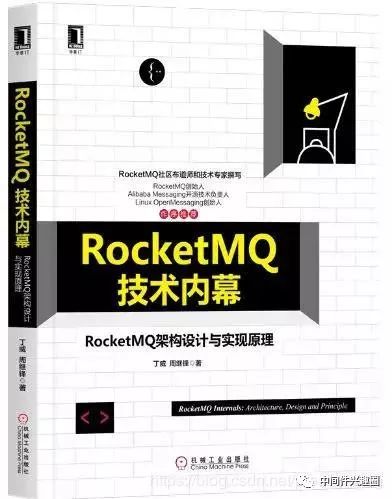本文将继续介绍elasticsearch索引监控之Indices segments与Indices Shard stores api。
Indices Segments
提供Lucene索引(分片级别)使用的segments(段信息)。
其对应的示例代码如下:
1public static final void test_Indices_segments() { 2 TransportClient client = EsClient.getTransportClient(); 3 try { 4 IndicesSegmentsRequest request = new IndicesSegmentsRequest(); 5 request.indices("logs_write"); 6 ActionFuture<IndicesSegmentResponse> responseFuture = client.admin().indices().segments(request); 7 IndicesSegmentResponse response = responseFuture.get(); 8 System.out.println(response); 9 } catch (Throwable e) {10 e.printStackTrace();11 } finally {12 EsClient.close(client);13 }14}
返回结果类似:
1{ 2 "_shards": ... 3 "indices": { 4 "test": { 5 "shards": { 6 "0": [ 7 { 8 "routing": { 9 "state": "STARTED",10 "primary": true,11 "node": "zDC_RorJQCao9xf9pg3Fvw"12 },13 "num_committed_segments": 0,14 "num_search_segments": 1,15 "segments": {16 "_0": {17 "generation": 0,18 "num_docs": 1,19 "deleted_docs": 0,20 "size_in_bytes": 3800,21 "memory_in_bytes": 1410,22 "committed": false,23 "search": true,24 "version": "7.0.0",25 "compound": true,26 "attributes": {27 }28 }29 }30 }31 ]32 }33 }34 }35}
返回结果字段说明如下:
_0
段的名称,表示第一个段。generation
在需要编写新段时基本上递增的生成数。段名是从这个生成号派生出来的。num_docs
存储在此段中的未删除文档的数量。deleted_docs
存储在此段中的已删除文档的数量。如果这个数大于0,那么当这个段合并时,空间就会被回收。size_in_bytes
段使用的磁盘空间量,以字节为单位。memory_in_bytes
段存储在内存中的字节数,如果-1表示elasticsearch无法计算。committed
段是否已在磁盘上同步(是否已经提交到磁盘)。search
是否可搜索,如果为false,表示段已提交到磁盘,但还没有被refresh,故暂时不可用来搜索。version
底层使用的lucene版本。compound
段是否存储在复合文件中。当为true时,这意味着Lucene将该段中的所有文件合并为一个文件,以便保存文件描述符。attributes
其他属性。
另外Indices Segments支持verbose默认,将输出一些调试信息,其返回结果如下:
1{ 2 "_0": { 3 4 "ram_tree": [ 5 { 6 "description": "postings [PerFieldPostings(format=1)]", 7 "size_in_bytes": 2696, 8 "children": [ 9 {10 "description": "format 'Lucene50_0' ...",11 "size_in_bytes": 2608,12 "children" :[ ... ]13 },14 ]15 },16 ]17 }18}
Indices Shard Stores
主要展示索引分片副本的存储信息。默认情况下,列表只存储至少有一个未分配副本的分片的信息。当集群健康状态为黄色时,将列出至少有一个未分配副本的分片的存储信息。当集群健康状态为红色时,这将列出具有未分配初选的碎片的存储信息。
对应的JAVA示例如下:
1public static final void test_Indices_Shard_Stores() { 2 TransportClient client = EsClient.getTransportClient(); 3 try { 4 IndicesShardStoresRequest request = new IndicesShardStoresRequest(); 5 request.indices("logs_write"); 6 ActionFuture<IndicesShardStoresResponse> responseFuture = client.admin().indices().shardStores(request); 7 IndicesShardStoresResponse response = responseFuture.get(); 8 ImmutableOpenMap<String, ImmutableOpenIntMap<List<IndicesShardStoresResponse.StoreStatus>>> data = response.getStoreStatuses(); 9 List indexList = new ArrayList();10 for (Iterator it = data.keysIt(); it.hasNext(); ) {11 String key = (String)it.next();12 Map indexData = new HashMap();13 indexList.add(indexData);14 List indexShardList = new ArrayList();15 indexData.put(key, indexShardList);16 ImmutableOpenIntMap<List<IndicesShardStoresResponse.StoreStatus>> value = data.get(key);17 for(Iterator it2 = value.keysIt(); it2.hasNext(); ) {18 Integer key2 = (Integer)it2.next();19 Map shardData = new HashMap();20 indexShardList.add(shardData);21 List shardStoreStatusList = new ArrayList();22 shardData.put(key2 + "", shardStoreStatusList);23 List<IndicesShardStoresResponse.StoreStatus> storeStatusList = value.get(key2);24 for(IndicesShardStoresResponse.StoreStatus storeStatus : storeStatusList) {25 Map storeStatusMap = new HashMap();26 shardStoreStatusList.add(storeStatusMap);27 storeStatusMap.put("allocationId", storeStatus.getAllocationId());28 storeStatusMap.put("allocationStatus", storeStatus.getAllocationStatus().value());29 Map discoveryNodeData = new HashMap();30 storeStatusMap.put("discoveryNode", discoveryNodeData);31 DiscoveryNode node = storeStatus.getNode();32 discoveryNodeData.put("name", node.getName());33 discoveryNodeData.put("name", node.getAddress());34 discoveryNodeData.put("attributes", node.getAttributes());35 discoveryNodeData.put("ephemeralId", node.getEphemeralId());36 discoveryNodeData.put("hostAddress", node.getHostAddress());37 discoveryNodeData.put("hostName", node.getHostName());38 discoveryNodeData.put("id", node.getId());39 discoveryNodeData.put("roles", node.getRoles());40 }41 }42 }43 System.out.println(FastJsonUtils.getBeanToJson(indexList));44 } catch (Throwable e) {45 e.printStackTrace();46 } finally {47 EsClient.close(client);48 }49}
返回的结果为:
1[ 2 { 3 "logs-000002":[ 4 { 5 0:[ // @1 6 { 7 "discoveryNode":{ // @2 8 "hostName":"127.0.0.1", 9 "roles":[10 "MASTER",11 "DATA",12 "INGEST"13 ],14 "name":{15 "address":"127.0.0.1",16 "fragment":true,17 "port":930018 },19 "attributes":{20 "ml.machine_memory":"16964890624",21 "ml.max_open_jobs":"20",22 "xpack.installed":"true",23 "ml.enabled":"true"24 },25 "hostAddress":"127.0.0.1",26 "id":"ekEDWaVVRH-944BgEsfRLA",27 "ephemeralId":"ox0CP9hhQOu1klZgNv7Ezw"28 },29 "allocationId":"KRw3BYPFTrK39HOYXzwXBA", // @330 "allocationStatus":"primary" // @431 }32 ]33 }3435 //由于当前试验环境为单机模式,故省略其他分片信息3637 ]38 }39]
代码@1:分片编号。
代码@2:分片所在的节点的信息,包含名称、角色、id、地址等信息。
代码@3:副本的分配ID。
代码@4:分配的状态,其值为primary、replica、unused。
索引监控相关API就介绍到这里了。
更多文章请关注微信公众号:

一波广告来袭,作者新书《RocketMQ技术内幕》已出版上市:

《RocketMQ技术内幕》已出版上市,目前可在主流购物平台(京东、天猫等)购买,本书从源码角度深度分析了RocketMQ NameServer、消息发送、消息存储、消息消费、消息过滤、主从同步HA、事务消息;在实战篇重点介绍了RocketMQ运维管理界面与当前支持的39个运维命令;并在附录部分罗列了RocketMQ几乎所有的配置参数。本书得到了RocketMQ创始人、阿里巴巴Messaging开源技术负责人、Linux OpenMessaging 主席的高度认可并作序推荐。目前是国内第一本成体系剖析RocketMQ的书籍。
本文分享自微信公众号 - 中间件兴趣圈(dingwpmz_zjj)。
如有侵权,请联系 support@oschina.cn 删除。
本文参与“OSC源创计划”,欢迎正在阅读的你也加入,一起分享。













